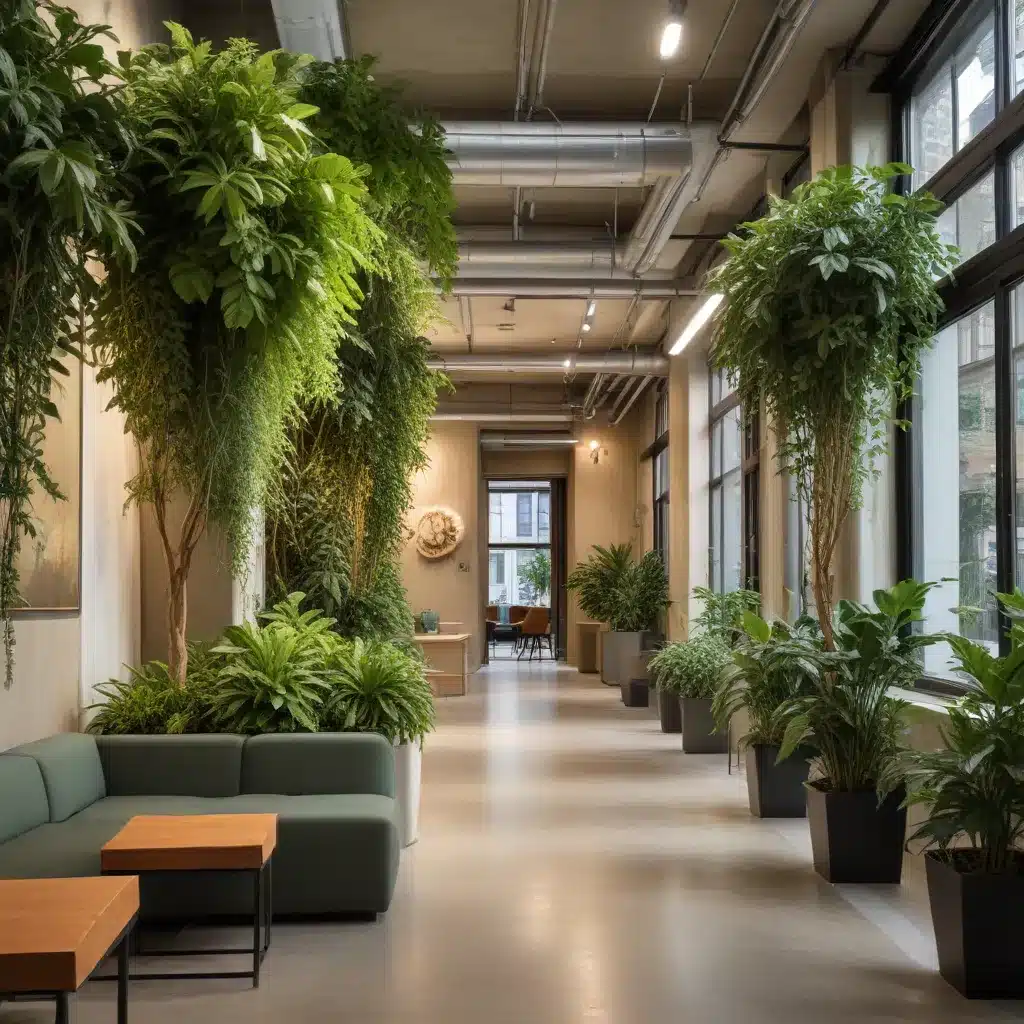In today’s fast-paced urban environments, the desire to reconnect with nature has never been stronger. Biophilic design, which incorporates natural elements into our living spaces, has gained popularity for its ability to reduce stress, increase productivity, and improve overall well-being. While luxury homes and high-end offices often showcase elaborate biophilic designs, it’s entirely possible to bring nature into your home without breaking the bank.
Biophilic Design Principles
At its core, biophilic design is about creating a harmonious blend of nature and modern living. By understanding the three key principles of biophilic design – nature-inspired aesthetics, direct connection with natural elements, and incorporation of biophilic patterns – you can transform even the most compact urban interior into a serene, restorative oasis.
Nature-Inspired Aesthetics
Incorporating natural motifs, colors, and textures is a fundamental aspect of biophilic design. Look for opportunities to use earthy tones, organic shapes, and materials that evoke the outdoors, such as wood, stone, and natural fibers. These elements can be introduced through furniture, textiles, wall coverings, and decorative accents.
Connecting with Natural Elements
Bringing the outdoors in is a core tenet of biophilic design. This can be achieved through direct experiences, like adding indoor plants, water features, or natural lighting, as well as indirect connections, such as nature-themed artwork or natural sounds. These elements help forge a tangible link between the built environment and the natural world.
Incorporating Biophilic Patterns
Certain spatial configurations and design patterns found in nature can have a profoundly positive impact on our well-being. Concepts like prospect and refuge, organized complexity, and transitional spaces can be woven into your home’s layout and decor to create a sense of comfort, fascination, and connection.
Optimizing Compact Urban Spaces
Implementing biophilic design principles in small, urban homes may require a bit more creativity, but the benefits are well worth the effort. By focusing on spatial arrangements, multifunctional furnishings, and strategic lighting, you can transform even the most compact interiors into rejuvenating havens.
Spatial Arrangements
In tight quarters, thoughtful zoning and intentional furniture placement can enhance the experience of biophilic design. Arrange seating areas to maximize views of greenery, either through windows or with strategic plant placement. Use partitions and screens to create a sense of refuge within open-plan layouts, while maintaining visual prospects to the outdoors.
Multifunctional Furnishings
When space is limited, choose pieces that serve multiple purposes. A daybed or built-in bench with storage can provide both a cozy spot to relax and a place to stash essentials. Nesting tables or a coffee table with hidden compartments allow you to incorporate natural materials without sacrificing precious floor space.
Lighting and Sightlines
Maximizing natural light is crucial for biophilic design. Opt for sheer window treatments that allow daylight to filter in, and strategically place mirrors to reflect and amplify the available light. supplement with task lighting and accent fixtures that mimic the warm, diffused glow of natural illumination.
Enriching the Sensory Experience
Engaging multiple senses is a hallmark of successful biophilic design. By incorporating greenery, diverse textures, and natural materials, you can create an immersive experience that transports you from the urban environment to a serene, nature-inspired sanctuary.
Greenery and Foliage
Indoor plants are a quintessential biophilic design element, offering a direct connection to the natural world. Choose a variety of species, from towering houseplants to trailing vines and delicate succulents, to add depth and visual interest. Arrange them in clusters, hang them from the ceiling, or incorporate them into living walls for a truly transformative effect.
Textural Diversity
Blend smooth, polished surfaces with rough, natural textures to engage the senses. Incorporate woven baskets, nubby throw pillows, and carved wooden accents to create a tactile experience. Juxtapose these with sleek, minimalist furnishings to strike a balance between modern and organic.
Natural Materials
Look for opportunities to incorporate sustainable, locally-sourced materials throughout your space. Use reclaimed wood for shelving, stone or cork for flooring, and natural fibers like jute or sisal for rugs and window treatments. These elements reinforce the connection to the natural world and can contribute to a more eco-friendly interior.
Enhancing Wellbeing and Productivity
Biophilic design is not merely an aesthetic choice; it’s a holistic approach to creating spaces that nurture both physical and mental well-being. By incorporating these elements, you can transform your compact urban home into a restorative oasis that boosts your mood, cognitive function, and overall quality of life.
Restorative Environments
Studies have shown that exposure to natural elements can help reduce stress, lower blood pressure, and improve mood. By creating calming retreats within your home – such as a cozy reading nook or a meditation corner – you can provide much-needed respite from the demands of everyday life.
Cognitive Benefits
Biophilic design has also been linked to enhanced creativity, focus, and problem-solving abilities. The organized complexity and prospect-refuge patterns found in nature can help stimulate the mind and combat the cognitive fatigue associated with urban living.
Improved Air Quality
Incorporating living plants into your home can have a tangible impact on indoor air quality. Houseplants are known to filter out harmful toxins, improve oxygen levels, and create a more healthful environment for you and your family to thrive.
As you embark on your biophilic design journey, remember that it’s not about perfection or luxury – it’s about creating a meaningful connection with nature that resonates with you and your lifestyle. Start small, be creative, and gradually transform your compact urban space into a nature-inspired haven that nurtures both body and soul. For more inspiration, visit Reluctant Renovator to explore a wealth of budget-friendly, eco-friendly, and family-friendly renovation ideas.




